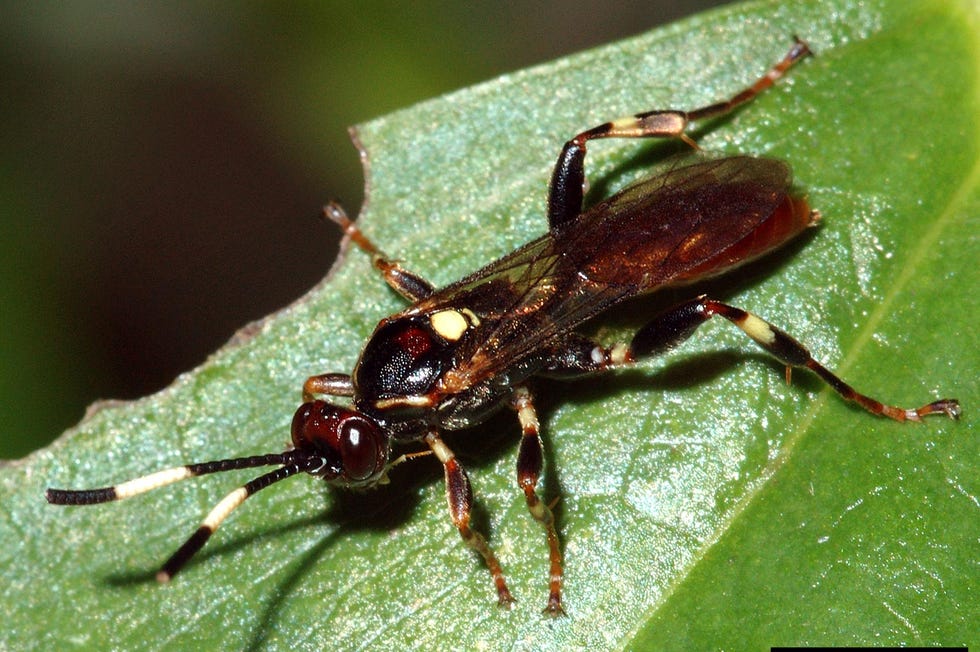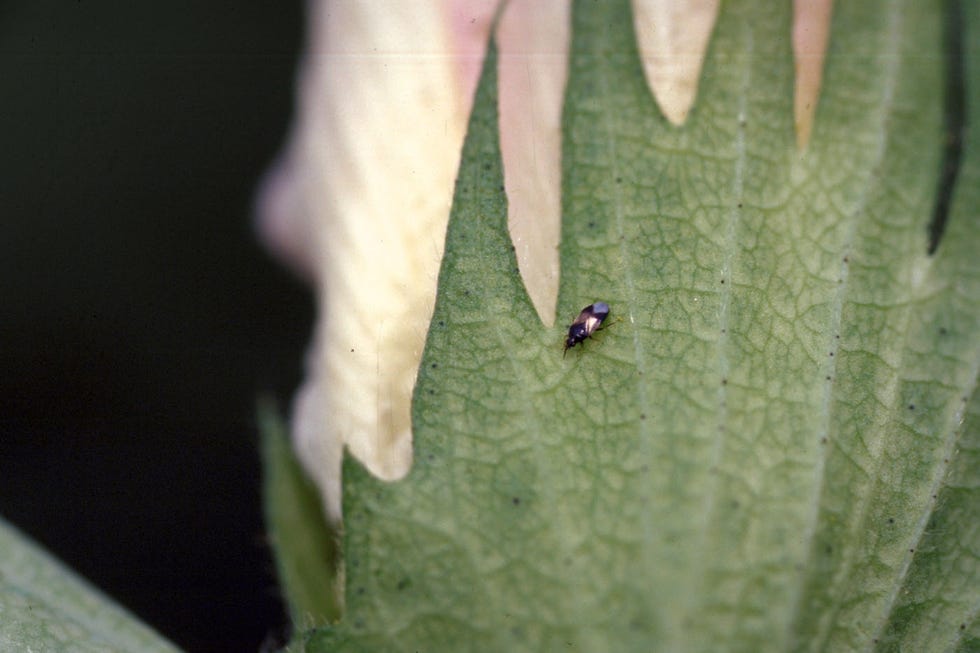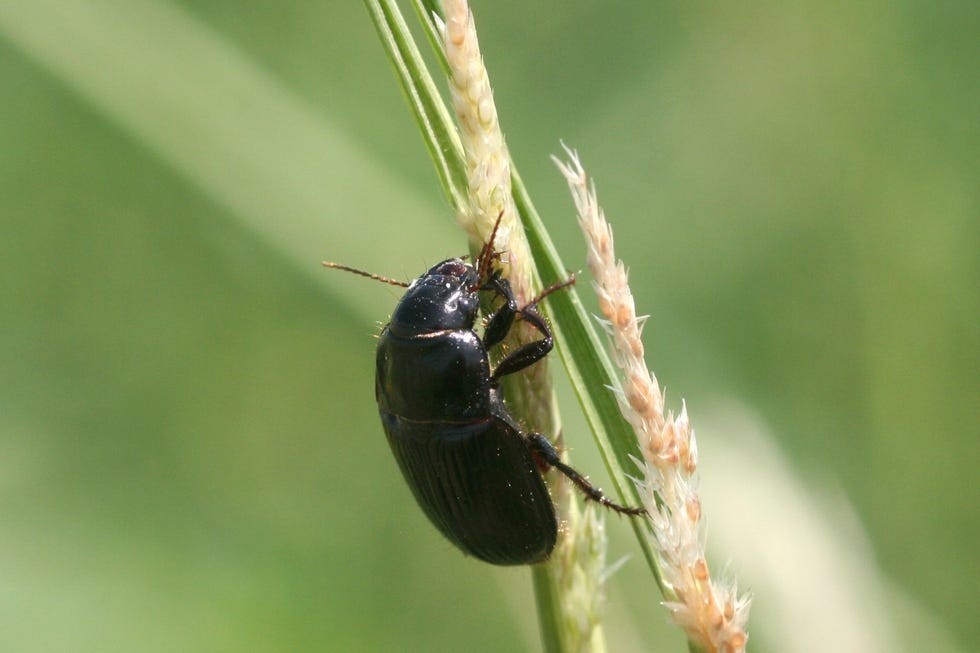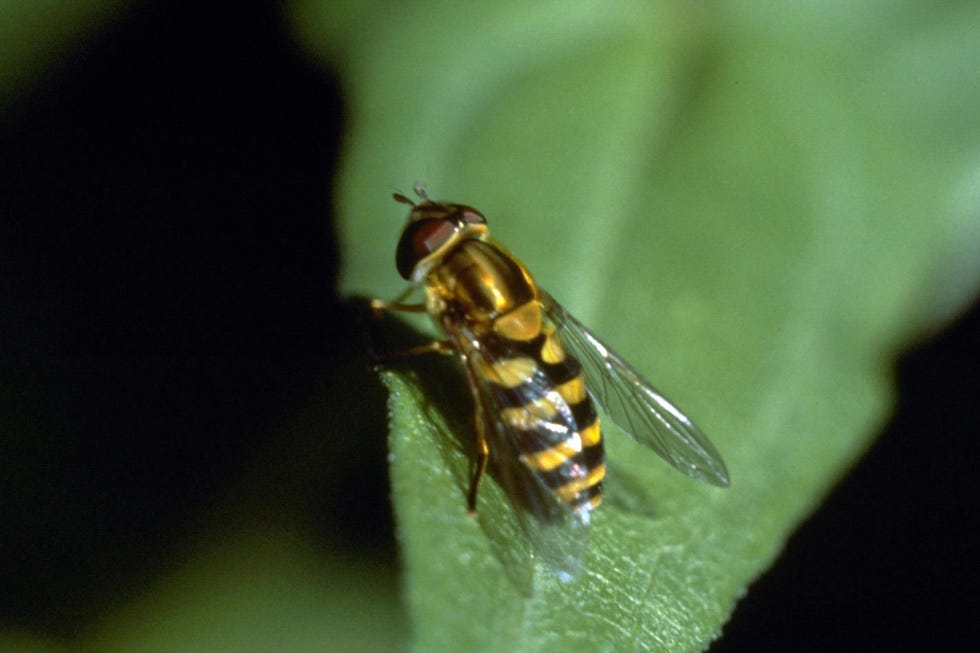As gardeners, we’re often battling an infestation of aphids on our roses or stink bugs on our tomatoes. But what if we could enlist some natural help by creating an environment that’s welcoming to the “good” bugs?
Beneficial bugs can be pollinators and predators, too. “Bugs aren’t inherently ‘good’ or ‘bad’ because everything has a role in the ecosystem,” says Max Kotelnicki, outdoor horticulture manager at the Atlanta Botanical Garden. “But beneficials are those that can become garden helpers that reduce our pest load, keeping it at a manageable level or at low enough population so that they’re not causing unsightly damage or killing our plants.”
If you aren’t sure what bugs you’re seeing in your garden, get a free ID app such as Seek by iNaturalist (though these aren’t always foolproof) or snap a photo and search online. Your local university coop extension service (find yours here) also can help you identify bugs if you aren’t sure whether they’re friend or foe.
Attracting beneficials isn’t difficult but takes some thought and planning. “You should plant many different types of plants and take other steps, such as limiting the use of insecticides, to create a more biodiverse environment,” says Beth Pantuliano, plant healthcare manager at Longwood Gardens. “This establishes a more conservation-minded garden.”
Related Stories
Ahead, here are some of the most common beneficials and how to attract them to your garden—and remember the species differ across the country, so your specific species may look different from the examples here or may not be common in your region.
Meet the Beneficial Bugs You Want in Your Garden
Beneficial bugs serve a purpose in your garden, either pollinating plants or hunting down other hungry pests that destroy garden plants. Of course, we all know that honey bees or mason bees are beneficial, but there are thousands of other bugs that are do-gooders. Here are a few of the most common beneficials you can attract.
Parasitoid Wasp
Susan Ellis, Bugwood.org
Parasitoid (Ichneumonid) Wasp
This is a large group that ranges from gnat-sized to 1.5 inches long, and there’s almost one for every species of garden pest. “Most often they’re solitary and create individual nests in places such as in ground or in logs,” says Kotelnicki. The adults may lay eggs on or inside a host, then the larvae consume the pest until they pupate into adults. Examples of parasitic wasp family groups include Ichneumon wasps, braconid wasps, and chalcid wasps.
Minute Pirate Bug
Ronald Smith, Auburn University, Bugwood.org
Minute Pirate Bug
With a name this cute, you’ll want this tiny bug in your garden! About .2 inches in size, they sit between leaves and wait for unsuspecting prey, feeding on pests such as thrips, aphids, spider mites, and other insect’s eggs, says Kotelnicki. Most are generalist predators.
LacewingMarc Volk//Getty Images
Green Lacewing
These beautiful bugs may be green or brown with gorgeous netted wings. They range from ½ to 1-inch-long. Both the adults and larvae eat soft-bodied insects such as aphids, says Kotelnicki.
Lady Beetle
Eugene E. Nelson, Bugwood.org
Lady Beetle Larvae
Both native and non-native lady beetles are generalists but will eat tons of soft-bodied pests such as aphids, scales, mealybugs, and small caterpillars. These little dome-shaped beetles may be red, of course, but you’ll also find species that are brown, orange, yellow, or pink with spots or not. The larvae, which sometimes look alligator-like, also are predators. “This is why it’s important to learn about the different life stages of beneficials insects you might find in your garden,” says Pantuliano.
Assassin Bugvinisouza128 / 500px//Getty Images
Assassin Bug
Assassin bugs love diversity in a garden, hiding out in mulch and leaf litter, says Pantuliano. They have long legs and a long needle-like mouthpart and reach .5 to 1-inch-long. They often stalk and ambush their prey—thus the colorful name! They love aphids, hornworms, Mexican bean beetles, Colorado potato beetles, cucumber beetles and more!
Ground Beetle
Whitney Cranshaw, Colorado State University, Bugwood.org
Ground Beetle
There are many different types of large-jawed, crawling beetles that like to climb up into the canopy of trees and shrubs looking for caterpillars to eat. There’s lots of range in size but they are often shiny black or brown. They also enjoy slugs and snails and typically hunt at night, says Kotelnicki.
Spiderarda20011002 / 500px//Getty Images
Spider
Though not everyone loves spiders, they’re great generalists, consuming bugs day and night, says Kotelnicki. They consume many garden pests, including aphids, cutworms, four-lined plant bugs, spider mites, and more. Some weave a web and wait, while others hunt.
Syrphid Fly
Whitney Cranshaw, Colorado State University, Bugwood.
Syrphid Fly
These small flies, which often resemble tiny bees, can hover in flight, giving them their other common name of hoverfly. The adults are great pollinators, but the larvae eat soft-bodied insects such as aphids, thrips, and leafhoppers. The larvae will eat pests such as maggots, says Pantuliano.
How Do You Attract Beneficial Bugs?
Besides cutting down (or eliminating!) the use of pesticides and herbicides, which have an impact on both desirable and undesirable bugs in the garden, here’s what else you can do to create a haven for beneficials in your yard:
Plant lots of different kinds of plants. “Prioritize native plants that provide nectar, food, and habitat to support local ecosystems, then weave in other plants that you love for their beauty,” says Pantuliano. Choose plants that offer a succession of flowers from spring to fall. That way there’s always something for them to eat because many beneficials also rely on nectar, says Kotelnicki. Let some of your herbs go to flower. These are great sources of nectar that attract beneficials of all types, says Pantuliano. Offer shallow water sources. Fill a pot saucer about 8-inches wide with marbles, then add water to provide a place for bugs to come and sip, says Pantuliano. Don’t clear away spider webs in your garden. Let them do their work, says Kotelnicki. Leave one area of your yard natural for overwintering bugs. You can place cut perennial stems in a cross-hatch pattern on the ground so it looks intentional and less messy, or leave some tall stems intact for your bugs, says Kotelnicki.
imageBROKER/Marcus Beckert//Getty Images
What Are the Best Plants for Attracting Beneficial Bugs?
There are many different plants that attract beneficial bugs, but here are a few of our experts’ favorite picks:
Mountain Mint (Pycnanthemum spp) Stokes’ Aster (Stokesia laevis) Goldenrod (Solidago spp, especially ‘Fireworks’ and ‘Golden Fleece’) Eastern Beebalm (Monarda bradburiana) Ironweed (Vernonia spp, especially ‘Iron Butterfly’) Summer Sweetshrub (Clethra alnifolia, especially ‘Ruby Spice’) Aromatic Aster (Symphyotrichum oblongifolium, especially ‘October Skies’) Button Bush (Cephalanthus occidentalis, especially ‘Sugar Shack’) Smooth Aster (Symphyotrichum leave, especially ‘Bluebird’)Coneflower (Echinacea purpurea)
You also can find other ideas for other native plants here.
Related Stories

